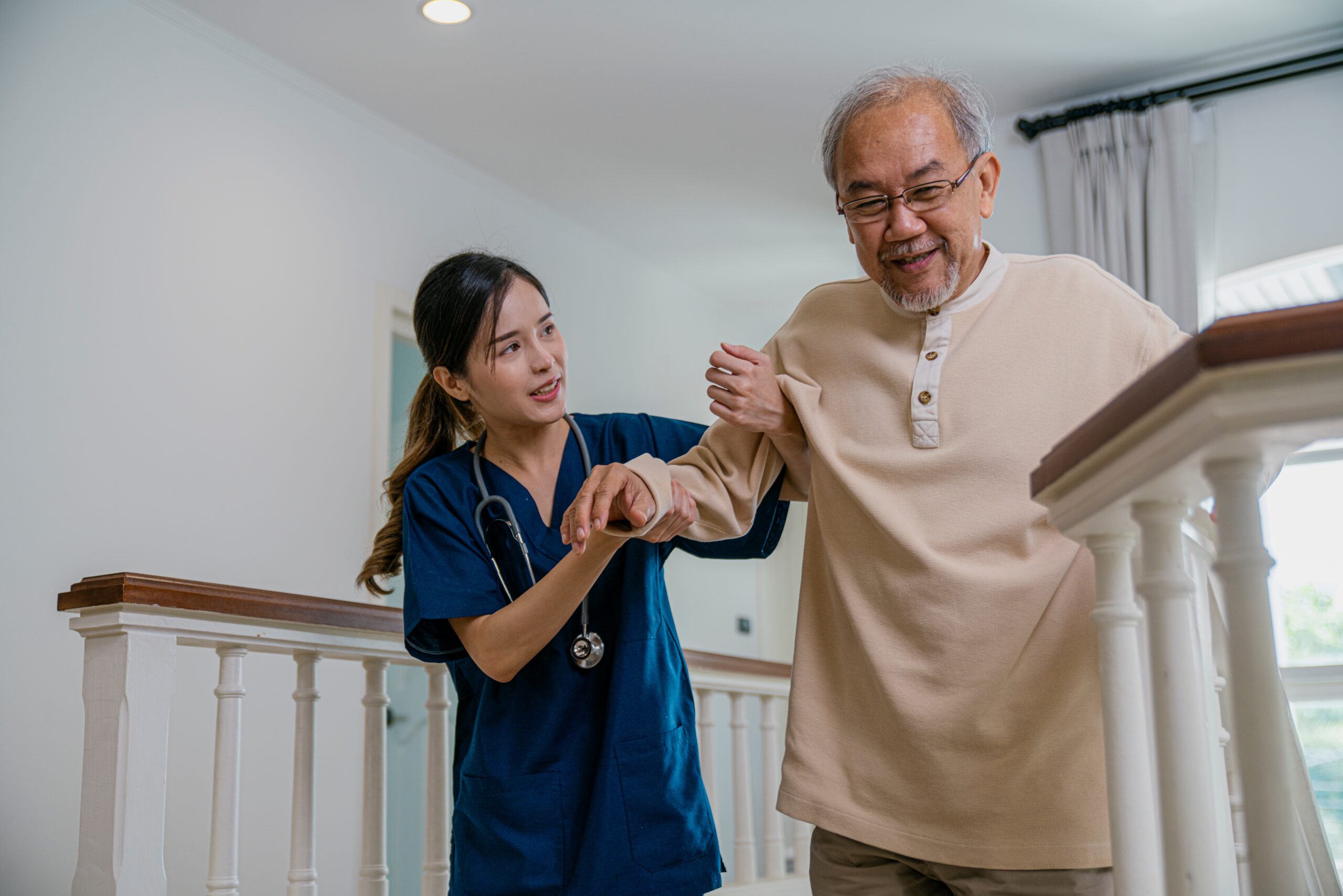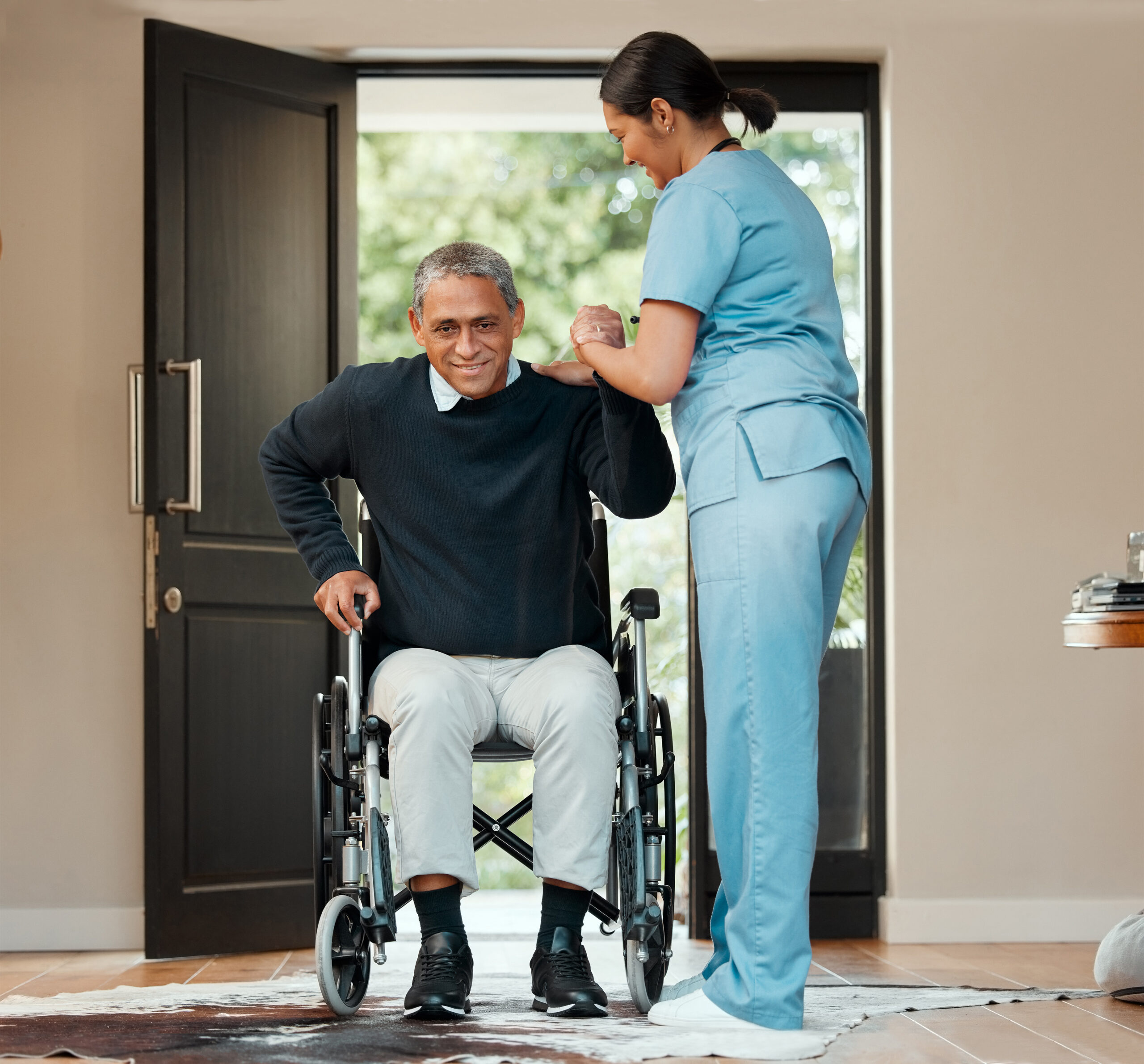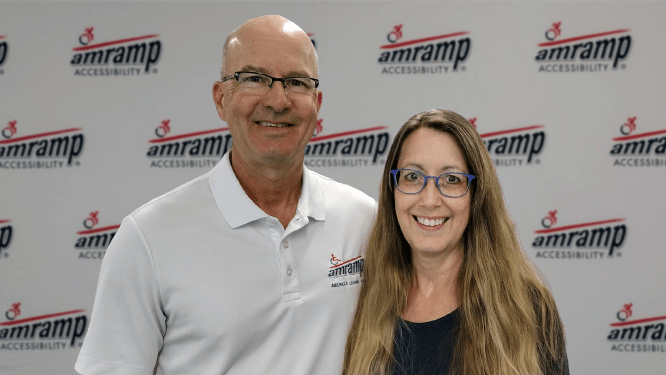Falls are a major health concern, especially for older adults, but they aren’t just a problem for people who already have mobility challenges. As we age or face temporary health setbacks, things like balance, strength, and vision can shift in ways that raise fall risk. The good news: many falls are preventable through thoughtful design, environmental adjustments, and use of supportive accessibility devices. The better news: a lot of these supportive devices can be temporary and don’t require major renovations or permanent changes to your home.
Some relevant facts:
- Each year, over 14 million adults aged 65 and older report a fall, about 1 in 4 people in that age group. CDC
- Around 37 % of those falls lead to injury that requires medical care or restricts activity. CDC
- One community-based fall prevention program showed a nearly 40 % reduction in harmful in-home falls after making safety-focused modifications (grab bars, better lighting, handrails, non-slip surfaces). WashU Medicine
- A systematic review of assistive technologies and home modifications suggests they can reduce fall risk in community-dwelling older adults, though the specific effect size depends on where and how they’re used. BioMed Central
This data makes one thing clear, which is that our surroundings have a major impact on fall risk and overall safety. Stairs, thresholds, slippery floors, and poor lighting can increase that risk, but targeted home modifications have been shown to make a meaningful difference.
Below we’ll explore several types of assistive or accessibility products and discuss how each can contribute to fall and injury prevention, even for people who are currently mobile.
Assistive & Accessibility Products as Fall-Prevention Tools
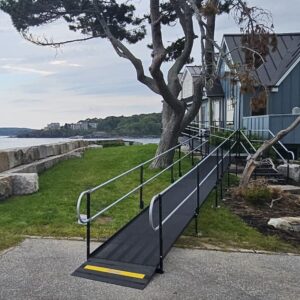 Ramps (Threshold / Modular / Portable)
Ramps (Threshold / Modular / Portable)
Why they matter: Any change in elevation, like a stoop, threshold, or steps, is a trip hazard, especially in dim light or with poor contrast. Ramps provide a gentle transition between levels, reducing the chance of tripping on sudden steps or uneven surfaces.
Threshold ramps make transitions between rooms, onto decks, or through sliding doors safer by removing sudden lip edges.
Modular ramps at entryways remove the need to manage steps while carrying items or when balance is less steady.
Portable ramps are useful for visits or temporary settings where a step exists; they reduce the risk of tripping or misplacing footing in unfamiliar spaces.
Overall, ramps make everyday movement easier and safer by reducing the effort needed to keep balance, including for those experiencing fatigue or mild mobility changes.
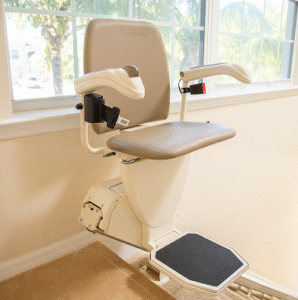 Stair Lifts & Vertical Platform Lifts (VPLs)
Stair Lifts & Vertical Platform Lifts (VPLs)
Why they matter: Stairs are a frequent site of falls, especially when vision or balance is challenged, or when someone is tired, carrying things, or recovering from injury.
A stair lift allows someone to bypass climbing or descending stairs altogether, eliminating the possibility of missteps or slips on treads.
A vertical platform lift (VPL) is particularly helpful when a porch or elevated entry would otherwise require climbing steps. Because the lift supports a platform (often with guardrails), it offers a stable surface during elevation change.
These solutions replace potentially hazardous stairways with a steady, effortless ride.
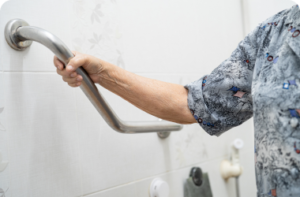 Grab Bars & Handrails
Grab Bars & Handrails
Why they matter: Supportive fixtures give people something solid to grasp during transitions (sitting, standing, turning). Many slips or near-falls can be averted if a handhold is available.
Grab bars in bathrooms, especially near tubs, showers, and toilets, are consistently recommended by safety experts and organizations like the Centers for Disease Control and Prevention (CDC) and the National Institute on Aging (NIA) as one of the most effective and affordable home modifications to help prevent falls.
Handrails along hallways, pathways, or porches provide continuous protection during walking, especially in less stable moments.
Securely mounted handholds placed in key locations significantly reduce the risk of slips and falls by providing reliable points of stability.
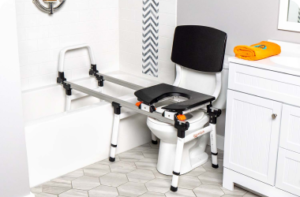 Bathing / Transfer Aids (Transfer Benches, Shower Chairs, Bath Seats)
Bathing / Transfer Aids (Transfer Benches, Shower Chairs, Bath Seats)
Why they matter: Wet floors, tight spaces, and high tub edges make bathrooms one of the most common places for falls. They reduce the need for unsupported movement in a high-risk zone.
Bathing transfers and shower chairs let someone slide or pivot into a tub without having to lift their legs high or balance on a wet surface.
Using a shower chair or bathing chair approach reduces the risk of slipping while standing on slick floors or losing balance mid-shower.
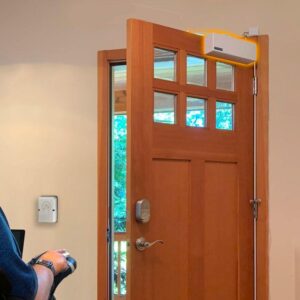 Automatic Door Openers
Automatic Door Openers
Why they matter: Doors, especially heavy ones, can be awkward to open when your hands are full or balance is unsteady.
Automatic door openers allow someone to enter or exit without having to maneuver a door, avoiding the need to lean, pull, or twist while maintaining footing.
This is especially helpful when stepping over thresholds or when approaching from an uneven surface.
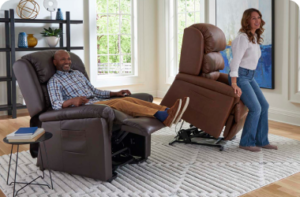 Lift Chairs
Lift Chairs
Why they matter: Rising from a low chair or recliner can strain the knees and hips, especially for those with reduced strength or flexibility. This movement also challenges balance, making it one of the most common moments of instability.
A lift chair helps tilt or raise the user toward standing, reducing the need for awkward weight-shifting.
Because many falls occur during sit-to-stand transitions, supporting that movement helps prevent a common hazard.
Home Modifications
If these products aren’t the right fit for your space or specific needs, it may be worth exploring more permanent solutions. Home modifications such as door widening, roll-in showers, upgraded showerheads, or other bathroom adjustments can create lasting accessibility and safety improvements tailored to your home’s layout.
How to Maximize Safety & Effectiveness
Simply owning these devices is not enough – it is how they are placed, used, and combined that really matters. Here are principles and best practices:
Combine environmental and personal strategies
Fall prevention is most effective when multiple strategies are used together, including physical exercise, vision care, medical review, and environmental changes. The CDC’s compendium of fall interventions lists home modification as an important domain alongside exercise and clinical interventions.
Prioritize high-risk zones
Focus first on areas with the greatest fall risk. This includes entryways, stairs, bathrooms, and transitions between rooms. Many falls among older adults occur indoors.
Ensure appropriate placement & professional installation
A handrail or grab bar that’s too low, too loose, or poorly anchored can be worse than nothing. Devices need proper height, orientation, and secure mounting for reliability.
Monitor, maintain, and reassess
Wear over time, loose screws, or shifting surfaces can reduce effectiveness. Regular inspection, maintenance, or updating is important. Also, as people’s health or mobility changes, their needs may change.
Why This Matters for Everyone, Not Just Those with Mobility Limitations
- Proactive safety: Even if someone is fully mobile now, intervening early can delay or prevent injuries or mobility decline.
- Recovery support: After injury or surgery, using assistive devices can reduce the risk of repeated falls during the recovery period.
- Preserving confidence and activity: The fear of falling often leads people to reduce movement, accelerating loss of strength and balance. Safer environments can help people stay active.
- Cost savings: Fall-related injuries carry high medical and societal costs. Preventing even a fraction of falls reduces hospitalizations and long-term care needs.
Studies show that community-based programs combining safety modifications with education can reduce in-home falls by ~40 %.
Conclusion & Takeaway
Fall and injury prevention is fundamentally about creating safer environments by smoothing transitions, providing support where needed, and reducing hazards before they cause harm. Assistive and accessibility products like ramps, lifts, grab bars, door openers, and lift chairs are not just for people with existing mobility challenges, they are tools for everyone to extend their independence and safety. With the option to rent ramps and sometimes stairlifts and other accessibility products from your local Amramp, you can find flexible solutions that meet your unique needs and home layout. To explore availability or learn more about permanent home modification options, contact your local Amramp today.

